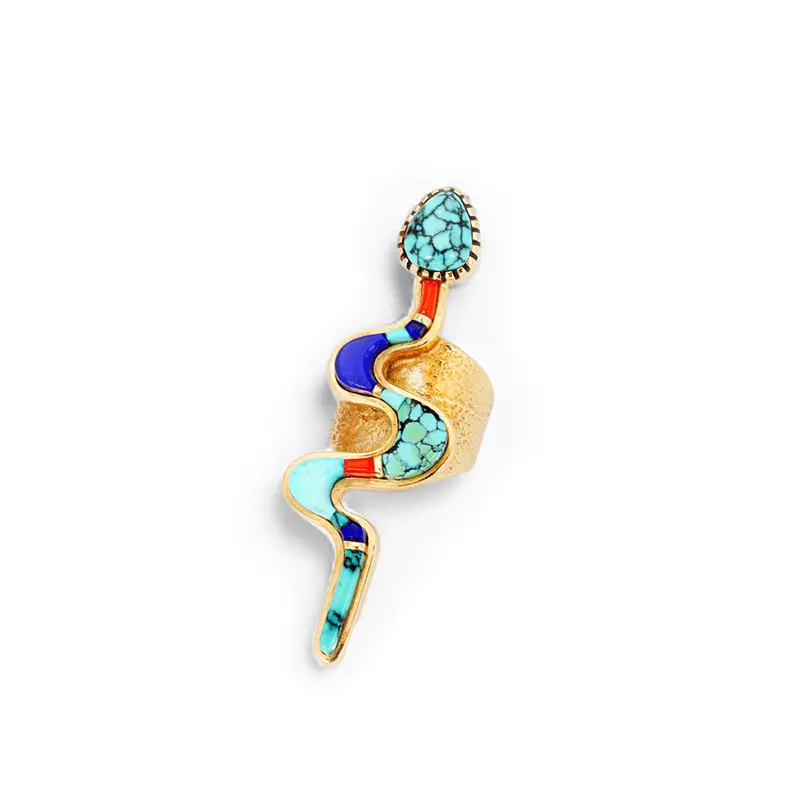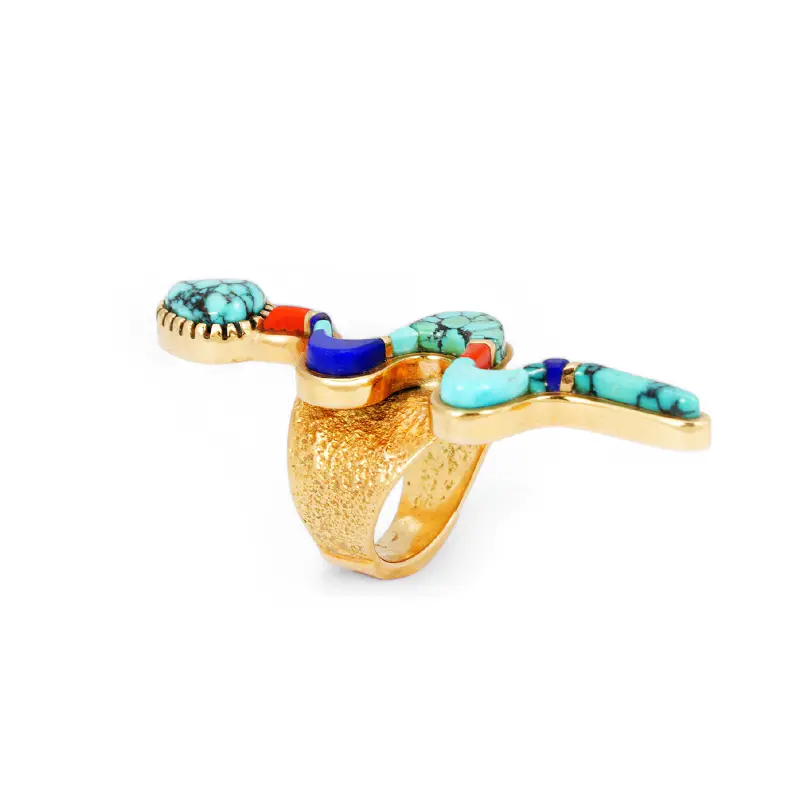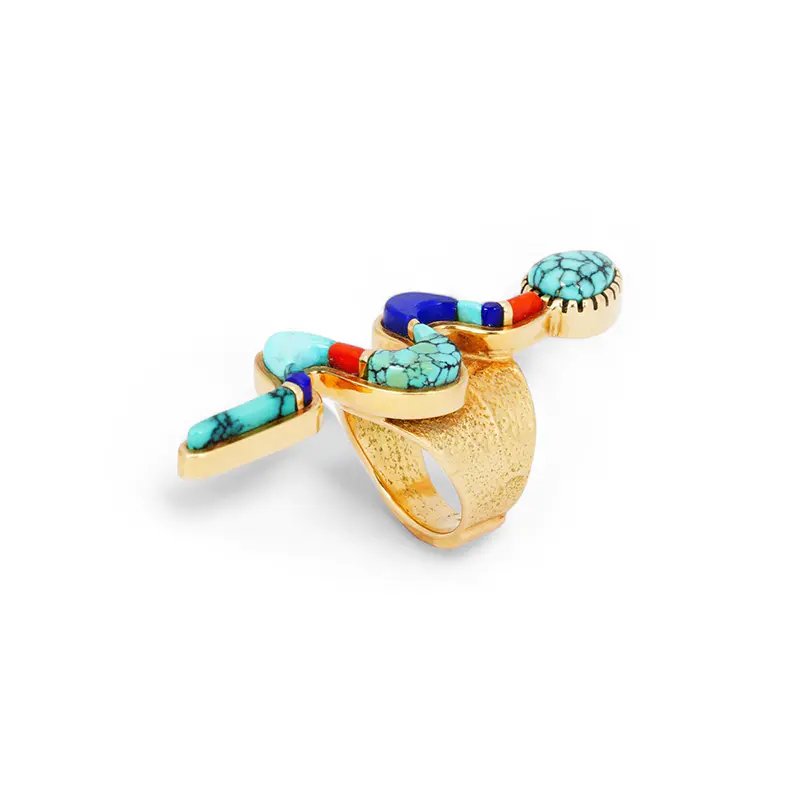Sonwai is the artistic name of Verma Nequatewa, a master Hopi jeweler whose work reflects both a deep cultural heritage and a commitment to innovation in contemporary Native American art. A niece and longtime apprentice of the legendary Charles Loloma, Sonwai began her artistic journey in the mid-1960s, working side by side with Loloma in his groundbreaking studio. For nearly three decades, she absorbed the techniques, philosophy, and spirit that defined his approach to jewelry—an approach that radically transformed Native American art by integrating traditional materials with modernist aesthetics.
After the closure of Loloma’s studio in the early 1990s, Sonwai established her own workshop in Hotevilla, Arizona, on the Hopi Reservation. There, she has continued to evolve the techniques and vision inherited from her uncle, creating her own distinct voice while honoring the legacy that shaped her foundation. Like Loloma, Sonwai’s work often utilizes 18k gold, turquoise, coral, lapis, ironwood, sugilite, and other precious materials in striking combinations of stone-to-stone inlay and sculptural forms.
Each piece by Sonwai is completely handcrafted, and no two are alike. Her jewelry is celebrated for its balance of elegance, symbolism, and technical excellence. She creates rings, bracelets, pendants, earrings, and belt buckles that embody the Hopi tradition of fine craftsmanship while pushing the boundaries of wearable art.
Today, Sonwai’s work is held in prestigious museum collections, sought after by collectors worldwide, and exhibited in major galleries and cultural institutions. With every piece she creates, Sonwai continues a living lineage—transforming tradition into timeless beauty.



